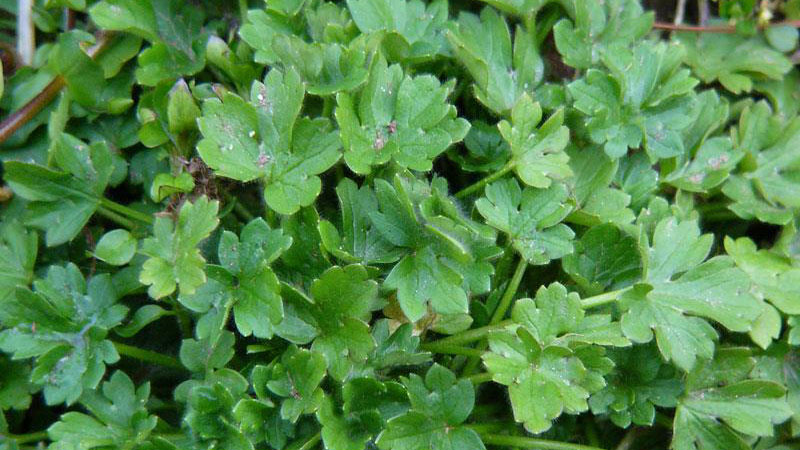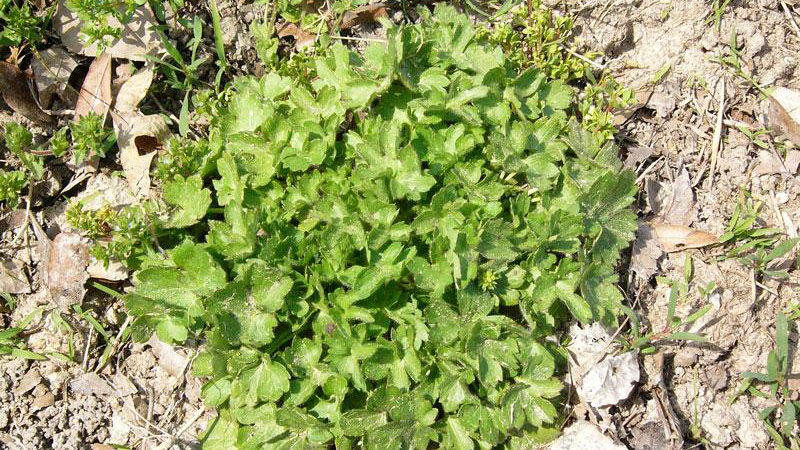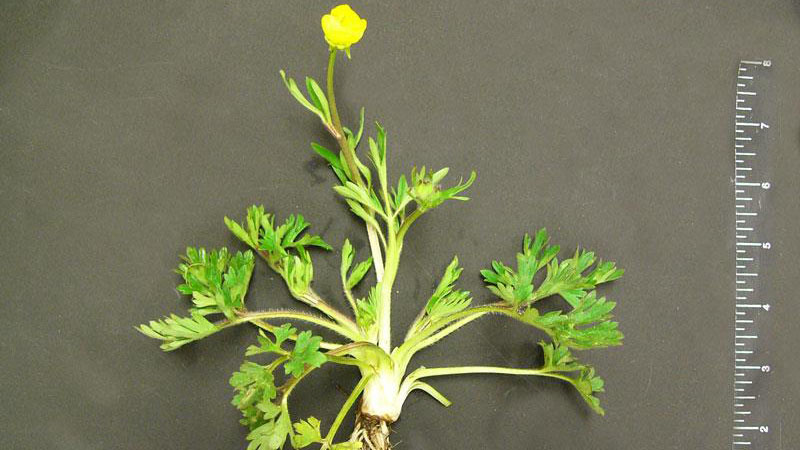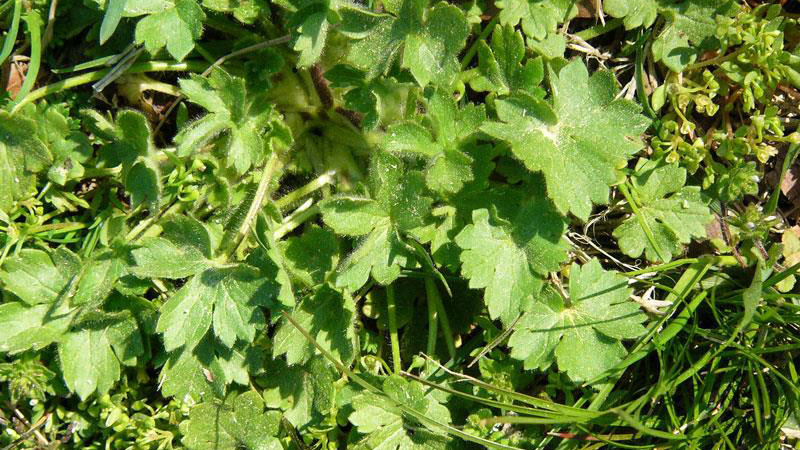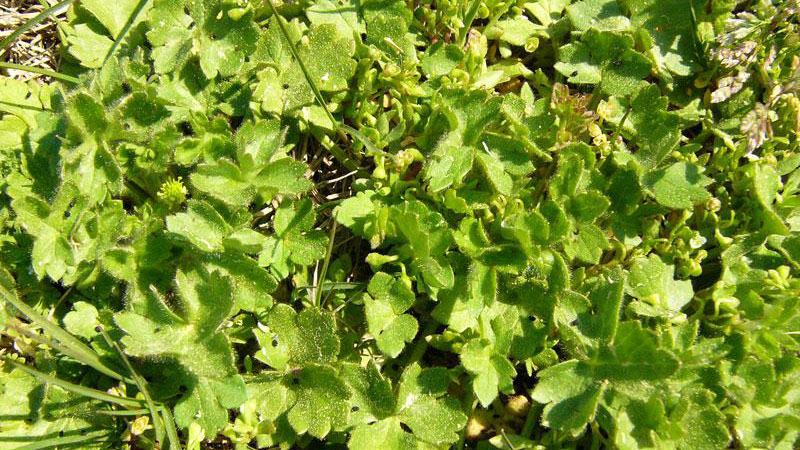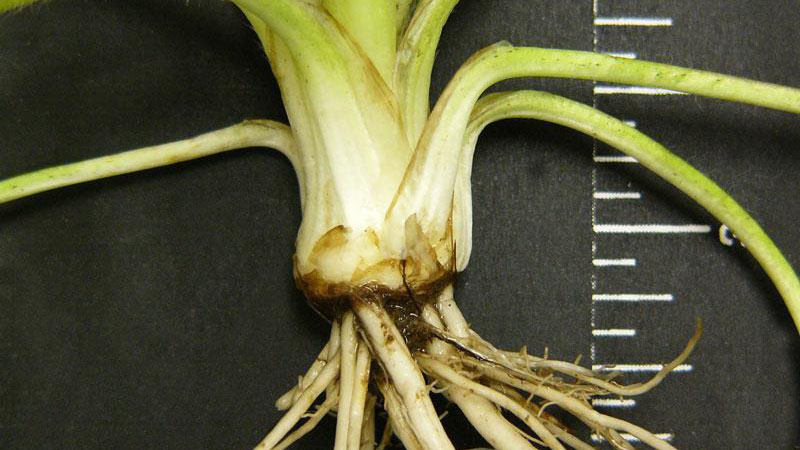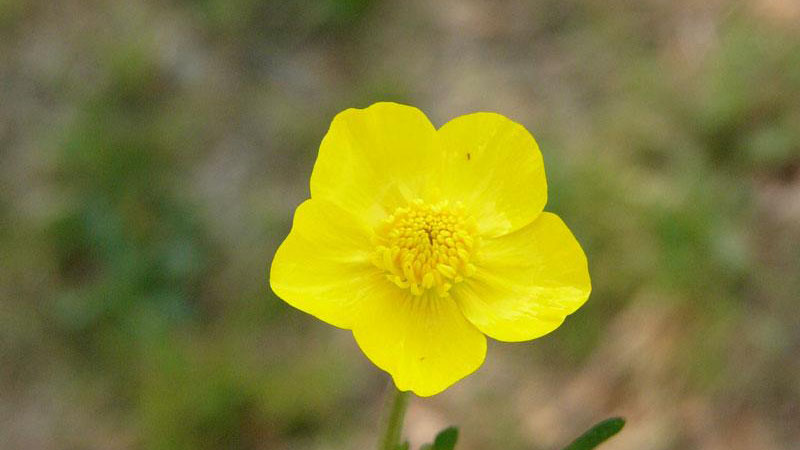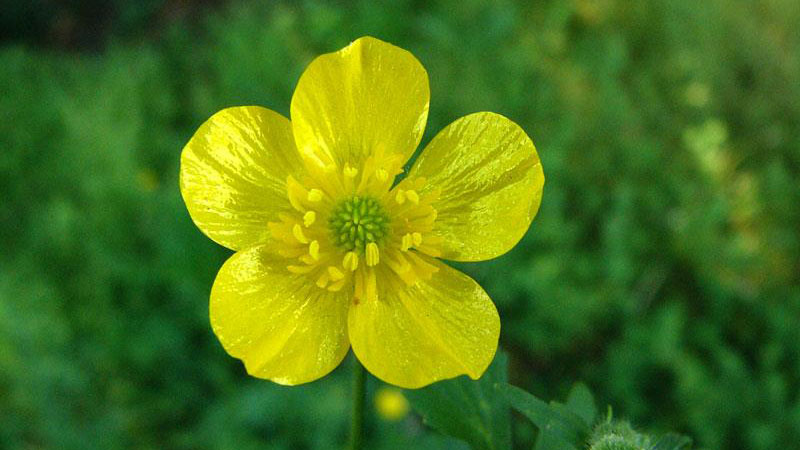Description
Two of the common buttercups found in North Carolina are hairy buttercup (Ranunculus sardous) and bulbous buttercup (Ranunculus bulbosus). Hairy buttercup appears to be predominant in the Piedmont and Mountain regions, while bulbous buttercup is readily found in the Piedmont and Coastal Plain regions. Hairy buttercup is a hairy plant with erect, hairy stems (single or branching from the base) and a fibrous root system. Vegetative characteristics of hairy buttercup are similar to those of bulbous buttercup, except for the bulb-like swelling at the base of the stem on bulbous buttercup. Smallflower buttercup is also found in North Carolina, and can be distinguished from hairy buttercup by the lack of hairs on its leaves. In addition, hairy and bulbous buttercup have lobed leaves, whereas most of the lower leaves of smallflower buttercup are unlobed.
Cultural Control
Winter annual broadleaf weeds germinate in the fall or winter and grow during any warm weather, which may occur in the winter, but otherwise remain somewhat dormant during the winter. They resume growth and produce seed in the spring and die as temperatures increase in late spring and early summer. They quickly invade thin turf areas especially where there is good soil moisture. Shade may also encourage growth. Many have a prostrate growth habit and are not affected by mowing. A dense, vigorous turf is the best way to reduce the encroachment of winter annual weeds. First, select adapted turfgrass cultivars for your area and then properly fertilize, mow, and water to encourage dense growth.
Species Data
- GROWTH SEASON / LIFE CYCLE
- winter annual or perennial weed
- GROWTH HABIT
- LEAFLET NUMBER
- one
- LEAF MARGIN
- lobed
- LEAF HAIRS
- LEAF / LEAFLET SHAPE
- oval/egg-shaped/elliptical
- LEAF WIDTH
- 1/2 - 2 inches
- LEAF VENATION
- palmate
- LEAF ARRANGEMENT
- alternate
- ROOT TYPE
- fibrous
- Figure 13
- FLOWER COLOR
Publication date: Nov. 16, 2017
Recommendations for the use of agricultural chemicals are included in this publication as a convenience to the reader. The use of brand names and any mention or listing of commercial products or services in this publication does not imply endorsement by NC State University or N.C. A&T State University nor discrimination against similar products or services not mentioned. Individuals who use agricultural chemicals are responsible for ensuring that the intended use complies with current regulations and conforms to the product label. Be sure to obtain current information about usage regulations and examine a current product label before applying any chemical. For assistance, contact your local N.C. Cooperative Extension county center.
N.C. Cooperative Extension prohibits discrimination and harassment regardless of age, color, disability, family and marital status, gender identity, national origin, political beliefs, race, religion, sex (including pregnancy), sexual orientation and veteran status.

